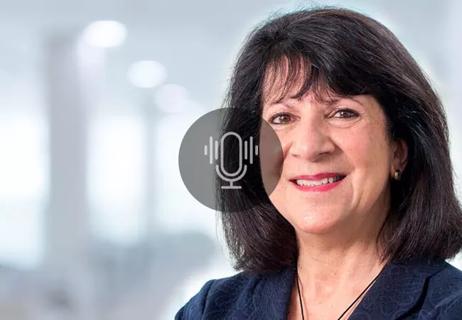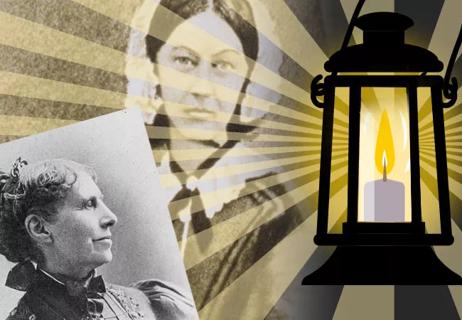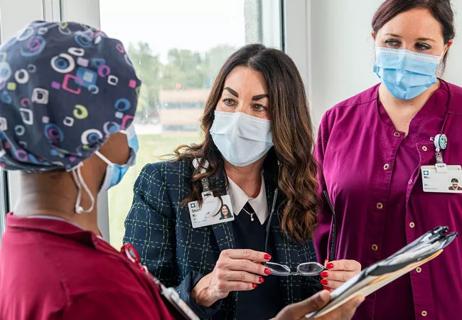Advertisement
Know the current state, consider the future and more

By Kelly Hancock, DNP, RN, NE-BC
Advertisement
Cleveland Clinic is a non-profit academic medical center. Advertising on our site helps support our mission. We do not endorse non-Cleveland Clinic products or services. Policy
Throughout Cleveland Clinic’s history, the healthcare organization has been recognizing and honoring exceptional nursing caregivers for their incredible work in delivering superior patient care.
Cleveland Clinic’s first formal enterprise-wide nursing awards recognition program was created in 2002. Known as the Cleveland Clinic Nursing Hall of Fame, the annual awards recognized a selection of outstanding nursing caregivers, two from each Cleveland Clinic hospital, inducting them into the Hall of Fame at a prestigious recognition event. As part of the program, each Cleveland Clinic hospital developed its own awards with varying criteria, eligibility and recognition. Nominations were submitted to a review committee and awards included specialty areas as well as specific positions and titles within Cleveland Clinic Nursing.
For nearly a decade, the Hall of Fame was Cleveland Clinic’s premier recognition program, but as Cleveland Clinic grew, the executive nurse leadership team recognized that the way nurses were honored and acknowledged also needed to grow. Thus, in 2011, the Stanley Shalom Zielony Institute for Nursing Excellence worked to develop a more standardized and integrated formal nursing recognition program.
Changing the name from the ‘Nursing Hall of Fame’ to the ‘Nursing Excellence Awards,’ the new program contained several awards that were similar to those of the past, but were renamed to better reflect award criteria and align with Cleveland Clinic Nursing’s Professional Practice Model.
Additionally, the new program encompassed two-part recognition that included both local and enterprise awards. Local awards were chosen by local peers and colleagues and presented locally at each hospital. Enterprise awards were chosen by an enterprise committee and presented at a new enterprise recognition event. The enterprise event was similar to the former Nursing Hall of Fame, but also celebrated lifetime achievement and excellence in the nursing Professional Practice Model.
A tremendous amount of work went into the development of the Nursing Excellence Awards program and throughout the process, our team learned important lessons that may be helpful for nursing organizations looking to create a formalized recognition program.
Understand your current state.
Our first action was to create a Nursing Excellence Awards committee. The committee included nurse managers, nurse directors, an executive nurse sponsor, project manager and members of the nurse marketing, events and human resources teams. The committee’s first task was to evaluate all awards that were being given across all facets of the organization, specifically at each hospital, and then conduct a gap analysis. One of the key findings of our gap analysis was that the number and type of awards being given at each hospital was not consistent.
We then proceeded to devise a plan for standardized, integrated enterprise award recognition, identifying the following as key objectives:
Advertisement
While all of our objectives were important, one of the things our gap analysis showed was that the type of awards being presented didn’t necessarily align with our Professional Practice Model, which reflects the philosophies and guiding principles of our work. This led to our second lesson.
Align awards with your Professional Practice Model.
Based on our model, some of the new awards we created were:
Advertisement
Along with our Professional Practice Model, when defining and writing award descriptions, we also looked to and reflected verbiage used by the American Nurses Credentialing Center (ANCC) standards, including the Magnet® recognition program.
In addition to determining our awards needed to be better aligned with our Professional Practice Model, another gap area was not adequately recognizing bedside or direct care nursing, but rather heavily recognizing nursing leadership. Thus, another lesson learned was:
Balance awards among all facets of nursing.
One way we addressed our imbalance, was by adding criteria to our Lifetime Achievement Award so that every year, six recipients of the award were bedside caregivers and six were non-bedside. While our example was leadership recognition versus bedside caregiver recognition, imbalances might occur elsewhere, depending on the organization. It’s important to look at all nursing input areas and design awards reflective of those areas. In another example, when we determined the new structure for local awards, we scaled the number of awards given to the number of nurses at each hospital. If a hospital had more than 500 nursing caregivers, they were allowed more than one local award. We also added local awards for nursing support roles not directly within the Nursing Institute, like patient experience and continuous improvement.
One of our final lessons learned, which also aligned with our key objective to “serve the enterprise today and into the future,” was:
Create awards that help drive your organizational goals forward.
To reflect Cleveland Clinic Nursing today and tomorrow, we knew our program needed to be flexible to easily adapt to future change and growth. When evaluating our final awards categories and descriptions, we asked ourselves questions like: “Can we apply this recognition structure to a new hospital joining our system?” and “Do these recognitions adequately reflect our international nurses?”
Advertisement
For the past 7 years, our Nursing Excellence Awards program has successfully recognized Cleveland Clinic’s best-of-the-best in nursing. Following the conclusion of each year’s program, the committee holds a post-mortem to evaluate the current awards system, discuss potential gaps, under-representation of any caregiver groups, alignment of award criteria with current organizational goals, relevance of awards per today’s practice standards and more.
This ongoing evaluation is key to the success of any awards recognition program and moving forward, the Nursing Excellence Awards committee will continue to meet on a regular basis, at least once per month, to evaluate and potentially adjust our awards or nomination processes as needed.
A great example of how ongoing evaluation helped enhance our nomination process was in 2017. That year, 900 award nominations were submitted via our homegrown electronic submission platform. With so many nominations submitted, the review process became more extensive and time consuming, including the need to have several four-hour face-to-face nomination review meetings. Our Nursing Excellence Awards committee decided to look for a platform that could help us evaluate and score nominations more efficiently. After implementing a new external online submission and review/scoring platform, we were able to eliminate the long meetings and consolidate the review process, designating five committee members to review, evaluate and score every 20 nominations.
In another more recent example, our 2018 post-event evaluation pointed to the need to enhance recognition of Cleveland Clinic’s advanced practice nurses (APNs), due to the growth of this field and the high use of APNs throughout Cleveland Clinic. We have now added an APN nursing award to our 2019 program.
Kelly Hancock is the Executive Chief Nursing Officer of the Cleveland Clinic Health System, and Chief Nursing Officer of Cleveland Clinic Main Campus.
Follow Kelly on Twitter at @kkellyhancock.
Advertisement
Advertisement

The CNO of Cleveland Clinic London shares insight and advice on international nursing

Nurses set goals for rebuilding a committee that waned during the pandemic

By listening closely and responding authentically, leaders can create an environment where nurses feel valued

Communication and self-reflection key to world-class patient care

Nurse leaders play a pivotal role in employee engagement, quality, safety – and, yes, patient care

Text highlights historic contributions to research, education and clinical care

Insights and advice from a nursing leader

Find balance, slow down, seek feedback and more